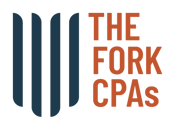Modern Restaurant Accounting
OK, let’s face it, you aren’t in the restaurant business because of your love of accounting. Still, like most businesses, consistent and accurate financial reporting is key to the success of your restaurant and ensures you have a way to assess your restaurant’s performance, identify problem issues and maximize profits. This article looks at some best practices in restaurant accounting and then offers some tips on helpful features of modern accounting systems – all from the perspective of owners and managers (no finance degree required!)
Timing is Everything: Accrual vs Cash Reporting
Cash-basis accounting refers to financial reporting based on when monies are received or spent. The alternative is accrual-basis accounting, in which revenues and expenses are booked based on when they actually occur, not when the cash changes hands. Cash-basis is the simplest approach and how some restaurants start out, but since sales and expense timing won’t always correlate, this method makes understanding real performance next to impossible. Reporting using the accrual-basis method is the only way to get the numbers needed for good labor and food cost analysis and getting a real sense of your business’ performance during any specific period. Most often, if you’re working with a restaurant accountant and complementary software, like MarginEdge, they follow the accrual-basis format.
Reporting Periods
OK, once you have your reporting format down, you’ll need to ensure your reporting periods let you compare performance over time. Reporting by calendar month (Jan, Feb, etc.) does not allow good comparability. The best way for restaurants to setup reporting is using 4-week periods (13 accounting periods of 4-weeks per year.) This schedule complements the weekly cycles used in many restaurants for other purposes and ensures the same number of each day (Fri, Sat, etc.) in each period. Plus, consistent 4-week periods make comparisons of financial performance from period to period much more useful. For example, if you run payroll weekly or bi-weekly, a 4-week period lets you align your labor costs perfectly with sales, resulting in accurate labor cost calculations.
Chart of Accounts
Your chart of accounts – setup and governed by your accounting system – drives the categories used on your financial reporting. Some restaurants use a generic, default set of accounts in the beginning, as this is the easiest to manage. For example, they might use “Cost of Goods Sold” to group all food, beverage and supplies purchases. However, this results in very limited information for evaluating costs and changes over time. It’s far better to use a set of accounts specific to restaurants, with the only challenge then being that detailed accounts (e.g. Food, Dry Goods, Beer, Wine, etc.) require more work to capture the data from invoices and sales data. This is where automated systems for invoice coding and entry, and direct feeds of POS data to accounting, become critical.
Other Features of Today’s Accounting
In addition to the above best practices in setting up your financial reporting, here are some highlights of which modern accounting features restaurants should demand from their systems and their accountants:
- Timely Information. Your P&L and financial reports should be an ongoing gauge, not a final report card. You want access to data in time to make course corrections in your business, rather than trying to make decisions from delayed reports. On-demand information is now more possible than ever through use of invoice processing tools, integrations with sales and accounting systems, and expertise of accountants who specialize in restaurants and their key systems.
- Access Anywhere. Gone are the days where all your reporting should be coming to you by paper or even digital documents pushed to you infrequently. With modern systems, you should have access ‘in the cloud’, meaning you can access your key information from a laptop or tablet no matter where you are. Make sure your reporting and accounting systems give you ‘anywhere’ access.
- Limited Manual Data Entry. One of the greatest challenges restaurants face is getting all the key information from various places (invoices, POS system, spreadsheets, etc.) into usable digital form and into an accounting system quickly and with the least amount of error. The best accounting systems and complementary tools used by restaurants today minimize or eliminate manual data-entry, thereby reducing error rates and accelerating the timing of information availability.
- Drill-Down Capability. With old-school accounting, your chart of accounts dictated how much detail you could get in financial reporting. If you wanted lots of great details, you needed lots of accounts, making it very difficult to capture information accurately into so many categories. Modern systems that allow restaurants to track expense and sales data, and integrate with accounting systems, alleviate the need to create an unwieldly chart of accounts and instead let you slice and dice data in ways not possible using only the chart of accounts.
To learn how MarginEdge can help you ditch the paperwork, reduce costs and streamline your restaurant’s operations, contact us to get a free demo.
 The Fork CPAs was founded by Raffi Yousefian, a Maryland native and strong small business supporter who has built a diverse network of brilliant individuals and businesses in the DC/MD/VA metro area. The Fork CPAs specializes in food service businesses, generating new business from client referrals and from individuals met through years in the community. Raffi thrives on helping clients and connecting them and seeing them build successful relationships
The Fork CPAs was founded by Raffi Yousefian, a Maryland native and strong small business supporter who has built a diverse network of brilliant individuals and businesses in the DC/MD/VA metro area. The Fork CPAs specializes in food service businesses, generating new business from client referrals and from individuals met through years in the community. Raffi thrives on helping clients and connecting them and seeing them build successful relationships
